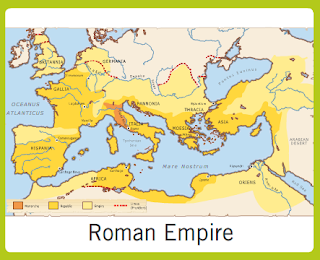In the last historical period we talked about the Visigoths. The Visigoths were in the Iberian Peninsula until the 711 A.D. when the King Roderic was defeated by the MUSLIMS. It was in this moment when this new historical period started.
LET'S HAVE A LOOK TO THIS VIDEO TO HAVE AN IDEA ABOUT HOW THE MUSLIM CONQUEST WAS.
THE MUSLIM INVASION.
- Muslims from northern Africa invaded Visigothic Spain in 711 A.D.
- They ocuppied most of the Peninsula and the Balearic Islands.
- This territory was called Al Andalus, and its capital was Cordoba.
- Al Andalus became a province of the Muslim Empire. It was governed by the caliph of Damascus in Asia.
THE EMIRATE OF CALIPHATE OF CORDOBA.
- In 756 A.D. Abd ar-Rahman I established Al Andalus as an independent province or emirate.
- In 929 A.D. Al Andalus became a caliphate under Abd ar-Rahman III. He was the caliph, the maximum political and religious authoroty in Al Andalus.
- The caliphate lasted until 1031 A.D. During this period, Al Andalus was divided into smaller kingdoms, called taifas.
THE END OF AL ANDALUS.
- The taifas fought among themselves and this helped the Christian Kingdoms to gain territory.
- In 1212 A.D. The Christians defeated the Muslims at The Battle of Las Navas de Tolosa.
- In 1492 A.D. the Catholic Monarchs conquered the only remaining Muslim Kingdom, the Kingdom of Granada.
SOCIETY AND CULTURAL HERITAGE.
- Al Andalus society was formed by Muslims, Christians and Jews.
- It had great scienctists, suchs as doctors, mathematicians and geographers. The mathematicians created the systems of numbers which we used today
- The Muslims made great contibutions to society:
- CROPS: like rice.
- INSTRUMENTS: like compass.
- IRRIGATION SYSTEMS.
LET'S PLAY AND REVIEW WHAT YOU'VE LEARNT


















































